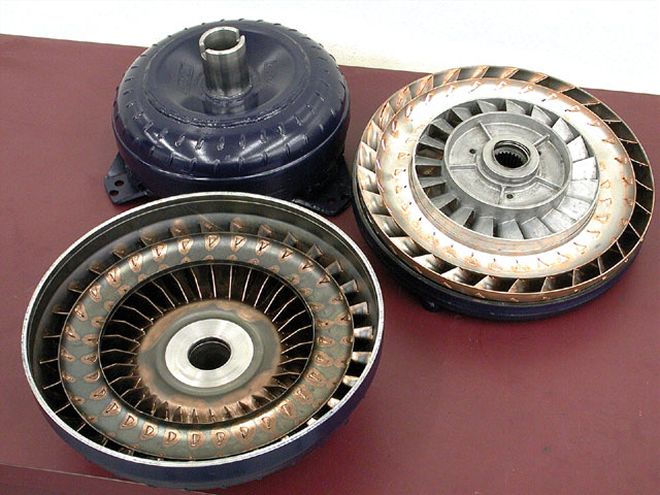

Stall speed is a term often used when describing torque converters. Generally speaking, stall speed is the rpm the engine achieves before the converter attains its coupling speed. In the days before true lockup converters, coupling speed used to be called "lockup" speed. Typical stock torque converters usually offer a relatively low stall speed of 1,800 rpm or lower in order to achieve the least amount of slippage for better efficiency and improved response to throttle. Higher stall speeds for performance street/strip applications allow the engine to rev higher, moving the launch rpm closer to peak torque where more power can be applied to launch the car. Typically, these street car torque converters will raise the stall speed up to somewhere around 2,400 to 4,000 rpm.
Most enthusiasts measure stall speed using the traditional brake torque method. With the engine and drivetrain at normal operating temperature, place the transmission in gear, and clamp down hard on the brake pedal while simultaneously applying throttle. At some point, the car will overcome the brakes and either the car will move forward or the rear tires will begin to spin. This is what the torque converter companies call foot brake stall. The difficulty with this measurement is that variables like the efficiency of the brake system, the size of the front tires, traction with the rear tires, rear gear ratio, and several other factors all play a role in determining this stall speed.
A second measurement is what the converter companies call flash stall. This is a perhaps a bit more accurate measurement of the converter's true stall speed. The easiest way to measure flash stall is to place the transmission in low gear and, from idle, nail the throttle and note the rpm the engine "flashes" as the car starts to move. Another way is to drive the car at the minimum speed where the transmission will not downshift out of high gear and mash the throttle. Watch the tach and record the flash rpm as soon as you hit wide-open throttle. This test is best performed in high gear because that places the greatest load on the converter, resulting in the converter's highest flash stall speed. For automatics like the TH350 or TH400, for example, with kickdown linkage or electric switch, disabling these mechanisms will make this test much easier.
Keep in mind that stall speed is also directly affected by engine torque. A converter behind a big-block that makes 500 lb-ft of torque at 2,000 rpm will exhibit more stall speed than when placed behind a 4.3L V-6 that makes barely 120 lb-ft of torque at the same engine speed. This is why understanding the difference between all these different types of measurement makes you a smarter car crafter.